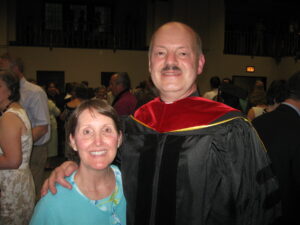Of late Protestantism seems to be undergoing a “climate change.” Theological positions are shifting and church affiliations are undergoing realignment in surprising ways. Reformed Christians are rediscovering liturgical worship and the church fathers. While pastors sought to enrich their Protestant heritage, they did not intend that people would jettison their Protestantism altogether and become Roman Catholic or Eastern Orthodox. These defections are raising concerns among pastors. Peter Leithart in a recent posting noted:
My friends tell me that my name has been invoked in various web skirmishes concerning Catholicism, Orthodoxy, and Protestantism, sometimes by people, including friends, who claim that I nurtured them along in their departure from the Protestant world. My friends also hinted that it would be good for me to say again why I’m not heading to Rome or Constantinople or Moscow (Russia!), nor encouraging anyone to do so.
Leithart’s “Too catholic to be Catholic” is an apologia for his remaining Protestant. A considerable part of the article focused on the matter of closed Communion and church unity. He argues that converting to Roman Catholicism or Eastern Orthodoxy does not heal divisions among Christians but rather reproduces the divisions in different ways.
Mercersburg Theology Paves the Way
I once held to this view. Prior to becoming Orthodox my theology was shaped by Mercersburg theology. Mercersburg Theology was a form of high church Calvinism in the 1800s that sought to incorporate the early church fathers and the Eucharist into Reformed Christianity. In many ways the Mercersburg theologians, John Nevin and Philip Schaff, anticipated the inclusive approach advocated by Leithart by more than a century. There is little that is new to what Leithart is advocating. There seems to be a Mercersburg revival among young Reformed scholars like W. Brad Littlejohn and Jonathan Bonomo.
Like Nevin and Schaff I believed then that through a historical dialectic the divisions between Roman Catholicism and Protestantism would be resolved. According to this view even if I were to become a Catholic, the dividing issues would still remain between the two traditions and for that reason it would be better to remain a Protestant and help Protestants recover their Catholic roots. In this way a more radical healing of the divisions would come about.
However, as I studied the early Church the more the underlying assumptions of Mercersburg Theology and the Protestant Reformation became problematic. Theology in the early Church was based upon the receiving of Holy Tradition and being in communion with its bishops. Nowhere was there any evidence of people reading the Bible for themselves. Contrary to the popular understanding of tradition as extra-biblical man-made inventions, the early Christians sought to preserve the teachings and practices of the Apostles. (See my posting on apostolic succession.) And just as surprising was the discovery that the New Testament teaches the passing on of the apostolic doctrine from one generation to the next (II Timothy 1:13-14, 2:2; II Thessalonians 2:15). (See my posting on the biblical basis for Holy Tradition.)
This historic-biblical understanding of Tradition was radically different from Mercersburg’s scholastic method which viewed the writings of the church fathers as theological resources for constructing theological systems than as part of a traditioning process. The notion of Tradition contradicts the idea of doctrinal evolution that underlies much of Western Christianity. For the early Christians then and Orthodoxy today, Holy Tradition is a body of doctrine and praxis received as a treasure to be safeguarded and preserved from alteration; it is not a jar of silly putty to be shaped and played with as we like. Furthermore, theology in the early Church was conciliar in which the Church Catholic made binding decisions on matters of doctrine and practice. This was a fulfillment of Christ’s promise that he would send the Holy Spirit to guide the Church into all truth. (See my recent blog posting on Pentecost.) What impressed me about the early Church was the reality of church unity back then. As a Protestant I was haunted by the fact that there was so much theological diversity among Protestants and even within the same denomination. And I was troubled by the fact that Protestant Christianity seemed to bear little resemblance to the early Church.
Horizontal Unity versus Vertical Unity
Leithart posed the question: “Are you willing to start going to a Eucharistic table where your Protestant friends are no longer welcome?” My response is that there are two dimensions to Eucharistic unity: horizontal unity in which one shares the same faith with others across the world in the present moment and vertical unity in which one shares the same faith with others across time, e.g., fellowship with the church fathers. As I became increasingly aware of the significant differences between Protestantism and the early church fathers I reached the conclusion that Protestants, even the original Reformers, would be barred from receiving Communion in the early Church. This led me to an awkward dilemma. Did I want to be in communion with contemporary Protestantism and out of communion with the early church fathers and the Ecumenical Councils? Or was I willing to give up my Protestant beliefs in order to be in communion with the one holy catholic and apostolic Church?
In other words, Pastor Leithart’s advocacy of open communion is inadvertently divisive because it sacrifices vertical unity with the historic Church for horizontal unity with the contemporary Protestant church.
Many Protestants would object: But we believe in the same things the early Christians did! I would respond: Do you really believe the same things the early Christians did?
- Does your church accept the Nicene Creed as authoritative? (Many Evangelicals today never heard of the Nicene Creed.)
- Does your church celebrate the historic Liturgy or is your order of worship something recently concocted? (Most Protestant churches do not celebrate the Eucharist every Sunday. Those who celebrate the Eucharist regularly do not have a received liturgical tradition that goes back to the Apostles, e.g., the Liturgy of St. James, St. Basil, St. John Chrysostom, St. Mark.)
- Does your church accept the doctrine of the real presence of Christ’s body and blood as taught by the early church fathers and the ancient liturgies? (Most Protestants today believe that the bread and wine are just symbols. The Lutheran doctrine of consubstantiation and the Reformed doctrine of the spiritual feeding in the Lord’s Supper have no counterpart in the teachings of the early Church.)
- Who is your bishop? What is his line of succession? (Virtually all Protestants lack bishops in the historic sense.)
- Does your church accept the Seventh Ecumenical Council’s decision about the veneration of icons? (No Protestant denominations and none of the Reformers venerated icons as decreed by Nicea II.)
- Does your church reject the novel doctrines of sola fide (justification by faith alone) and sola scriptura (the Bible alone)? (None of the early church fathers taught these Protestant doctrines.)
The gap between modern day Protestantism and the early Church is considerable. The early Church did not subscribe to the view that if one accepted Jesus as Savior one was automatically a Christian and therefore a member of the body of Christ. Becoming a Christian in the early Church was a fairly lengthy process in which one faithfully attended the Sunday liturgies for at least a year and learned the Creed by heart. Conversion in the early Church meant undergoing the sacrament of Baptism in which one was born anew in Christ, received the Holy Spirit in the sacrament of Chrismation, then brought before the altar where one received the body and blood of Christ in the Eucharist. (See Cyril of Jerusalem’s Catechetical Lectures, especially Lectures XIX to XXIII.)
Pastor Leithart is critical of the notion of closed communion. He wonders what the difference is between the Catholics, Wisconsin Synod Lutherans, or the Continental Reformed? For Pastor Leithart this is a rhetorical throw away question. But actually, this is a very useful question to ask. Another way to pose the question is to ask: What does Communion mean for this particular body? What does Communion tell me about the boundaries for their faith? How a church body practices Communion brings to light how they define the parameters of doctrinal orthodoxy, i.e., how it distinguishes right doctrine from heresy. It shines a spotlight on the theological core of the church body. A church body without a theological core is like a person without an identity (a very unhealthy situation to be in!).
Communion in Roman Catholicism means: (1) that one accepts the infallible teaching authority of the Pope and (2) that one accepts the Catholic Church’s dogma on transubstantiation. Communion in the Orthodox Church means: (1) that one has received the “pattern of sound teachings” (II Timothy 1:13-14) passed on from the Apostles through the bishops (II Timothy 2:2) to the church of today, and (2) that one has placed one’s self under the authority of the bishop the guardian and teacher of Apostolic Tradition (II Timothy 4:1-5). In the case of the Wisconsin Lutheran Synod, to be in communion means that one accepts the distinctive Lutheran doctrines as found in the Book of Concord. Even Baptists practice a form of closed communion; only those who have been baptized by total immersion are granted access to the communion table.
What Pastor Leithart is doing with his rhetorical question is not only trivializing the Eucharist by detaching it from doctrinal authority but isolating the Eucharist from the historic church be it Protestant, Roman Catholic, or Orthodox. He seems to be saying we all should be giving communion to each other regardless of our doctrines or regardless of our what our faith tradition teaches. Is he implying that there are no core doctrines? And that communion is to be given to all without condition? And that there is no such thing as wrong doctrine (heresy)? I’m sure that Pastor Leithart does have doctrinal standards that he applies when he celebrates Holy Communion. Once he spells out what the preconditions are then he in effect declares what he considers to be the boundaries of his church tradition.
A Critique of the Branch Theory of the Church
Leithart’s criticism of closed communion is apparently based upon the branch theory of the church. The branch theory of the church believes that despite the outward divisions, the various denominations (branches) remain part of the one true Church. This view holds that despite the differences we are all one and that we need to recover a visible expression of our underlying oneness. In its original version, the branch theory encompassed the Roman Catholic, Anglican, and Orthodox traditions; then somewhere along the way it was broadened to include Lutherans, Reformed Christians, Baptists, and born again Evangelicals! Given Protestantism’s inability to find common theological ground, the attempt is made to substitute orthodoxy with inclusiveness. Such an approach is radically at odds with historic Christianity. Furthermore, the branch theory calls into question Christ’s promises that the gates of Hell would not prevail over the Church and that the Holy Spirit would guide the Church into all truth. (See my recent blog posting: Pentecost and the Promise of God Fulfilled.)
Orthodoxy rejects the branch theory on several grounds. One, none of the church fathers taught this doctrine. Historically, it was invented by the Anglican theologian, William Palmer (1803-1885), and then popularized by the Oxford Movement in the mid 1800s. Two, the branch theory assumes that heterodoxy is compatible with the one true Church. Three, the branch theory assumes that each of the branch (denomination) has a part of the Truth but no one branch (denomination) has retained Apostolic Tradition intact. This implies that the original Apostolic Tradition is no longer intact but exists only in broken fragments. On the grounds that it has faithfully preserved the Apostles’ teachings for the past two thousand years, Orthodoxy is compelled to reject the branch theory. The irony and tragedy here is that Leithart’s position on open communion seems to have roots going back to the 1800s, not to the ancient Church.
Is denying Communion to Protestants a Bad Thing?
Orthodoxy is not a social club but a covenant community entrusted with safeguarding the Apostolic Tradition. This is the teaching and practice of the Apostles handed down from generation to generation with care and diligence; much like how the crown jewels of the British monarchy are treated with great respect and care. Protestants are denied Communion because they do not share in the historic Faith but hold to a novel theological system that none of the church fathers taught.
By denying Protestants Communion Orthodoxy is actually doing Protestants a favor by making visible Protestantism’s alienation from its patristic roots. We invite Protestants to become part of a historic Faith that has been handed down from the Apostles. We invite Protestants to leave behind their doctrinal innovations and embrace the historic Christian Faith. But it should be made clear that Orthodoxy will not endorse a cheap ecumenicism that jeopardizes our ties with the historic Church. The Eucharist is not just a symbol but a genuine receiving of Christ’s body and blood. Eucharistic union with the Orthodox Church means being in communion with the one holy catholic and apostolic Church confessed in the Nicene Creed.
Learning From Ignatius of Antioch
Let us give heed to Ignatius of Antioch, the third bishop of Antioch who was martyred circa 117. Tradition has it that Ignatius was one of the children Jesus took into his arms and blessed. It is important to keep in mind that Antioch was the Apostle Paul’s home church (Acts 11:25-26, 13:1-2). This means that Ignatius was discipled at one of the spiritual capitals of the early Church. Orthodoxy can claim a direct historic link to Ignatius through the Patriarchate of Antioch which still exists today. The church Antioch continues today under the leadership of the Patriarch of Antioch, Ignatius IV.
Ignatius wrote:
Let no one do any of the things appertaining to the Church without the bishop. Let that be considered a valid Eucharist which is celebrated by the bishop, or by one whom he appoints. Wherever the bishop appears let the congregation be present; just as wherever Jesus Christ is, there is the Catholic Church. (Letter to the Smyrneans VIII)
For Ignatius the Catholic Church was evidenced by two things: the Eucharist and the bishop. The Orthodox Church holds to the same view as Ignatius. It is surprising that Pastor Leithart feels free to ignore the very point that Ignatius stressed over and over as he faced death as a martyr for Christ. Ignatius also has stern words of warning:
“Be not deceived,” my brethren, if any one follow a maker of schism, “he does not inherit the kingdom of God;” if any man walk in strange doctrine he has no part in the Passion. (Letter to the Philadelphians III)
What we read here from Ignatius is not a call to doctrinal inclusiveness but to doctrinal orthodoxy. “Strange doctrines” refers to any teaching not taught the Apostles and their successors, the bishops. Because they lack bishops Protestants have been vulnerable to strange teachings. The novelty and Protestant assumptions underlying Pastor Leithart’s article “Too catholic to be Catholic” becomes stark when compared against Ignatius of Antioch’s letters. The two positions are too different to be reconciled. Leithart’s “Too catholic” article cannot be squared away against Ignatius’ teachings. One has to accept the one and reject the other. This means that one must choose between communion with contemporary Protestantism or communion with the historic Church via Eastern Orthodoxy.
Conclusion
Pastor Leithart misses the mark when he makes inclusiveness and doctrinal diversity the basis for being “catholic.” What Leithart is proposing is a Protestant solution (doctrinal inclusiveness) for a Protestant problem (denominational divisions and doctrinal innovation). Ironically, Leithart’s attempt at ecumenicism exacts a high price – schism from the historic Church. To conclude, Leithart’s “catholicism” is unintentionally schismatic.








Recent Comments